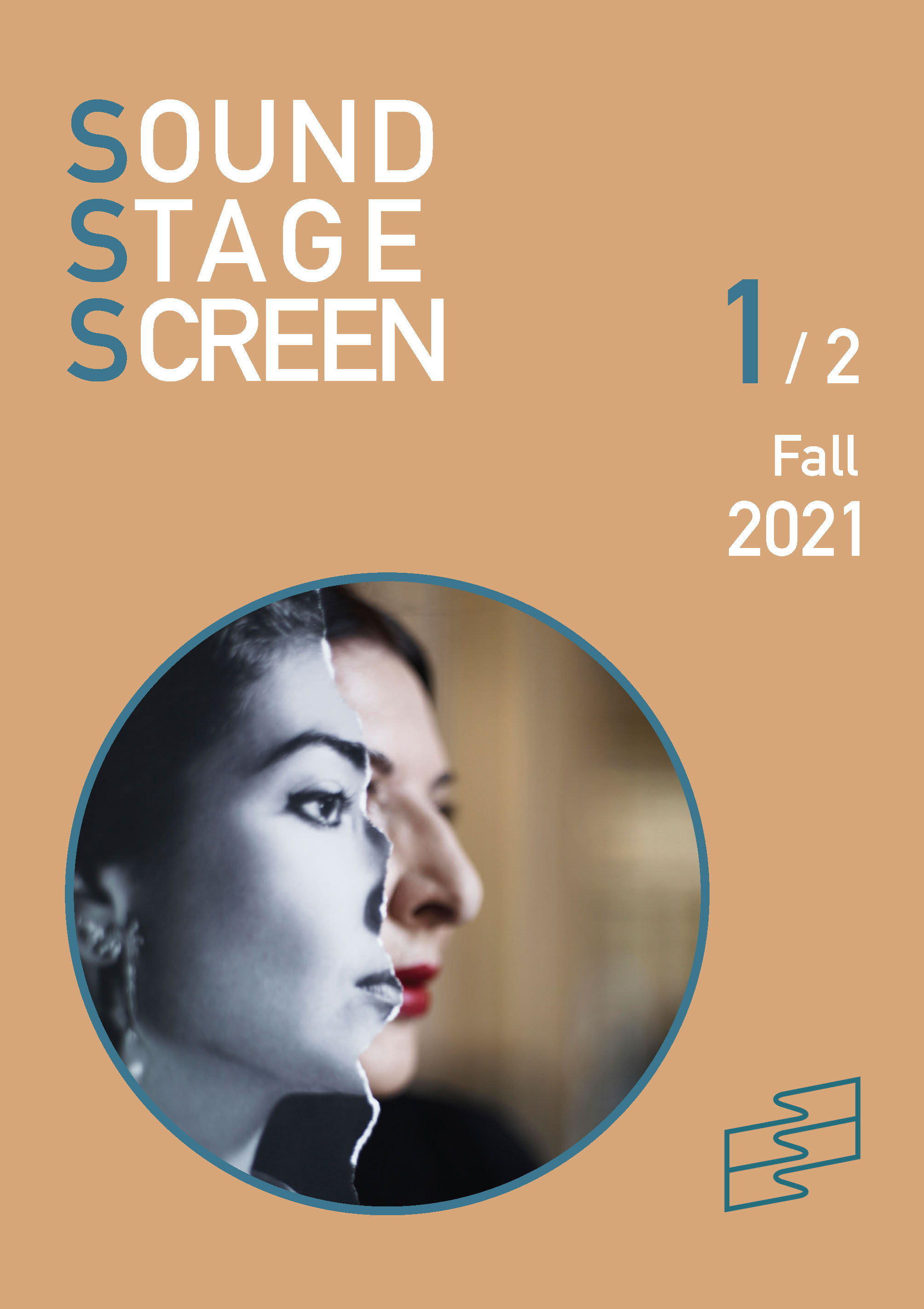Abstract
References
Banks, Paul, ed., Benjamin Britten: A Catalogue of the Published Works. Aldeburgh: Britten-Pears Library, 1999.
Biancorosso, Giorgio. “Ludwig’s Wagner and Visconti’s Ludwig.” In Wagner and Cinema, edited by Jeongwon Joe and Sander L. Gilman, 333–57. Bloomington: Indiana University Press, 2010.
Britten, Benjamin. Death in Venice. An opera in two acts, op. 88. Libretto by Myfanwy Piper, based on the short story by Thomas Mann. Piano reduction by Colin Matthews. Vocal score (0-571-50514-7). London: Faber Music Ltd, 1974.
Britten, Benjamin. Death in Venice. An opera in two acts, op. 88. Libretto by Myfanwy Piper, based on the short story by Thomas Mann. Full score (0-571-53939-4). London: Faber Music Ltd, 1979.
Brooks, Tim. Lost Sounds: Blacks and the Birth of the Recording Industry, 1890–1919. Urbana: University of Illinois Press, 2006.
Chowrimootoo, Christopher. “Bourgeois Opera: Death in Venice and the Aesthetics of Sublimation.” Cambridge Opera Journal 22, no. 2 (2010): 175–216.
Cooke, Mervyn. Britten and the Far East: Asian Influences in the Music of Benjamin Britten. Woodbridge: The Boydell Press, 1998.
Cutchins, Dennis. “Bakhtin, Intertextuality, and Adaptation.” In The Oxford Handbook of Adaptation Studies, edited by Thomas Leitch, 71–86. New York: Oxford University Press, 2017.
Dierks, Manfred. Studien zu Mythos und Psychologie bei Thomas Mann. An seinem Nachlaß orientierte Untersuchungen zum «Tod in Venedig», zum «Zauberberg» und zur «Joseph»-Tetralogie. Bern: Francke, 1972.
Evans, Peter. The Music of Benjamin Britten. Oxford: Clarendon Press, 1996.
Faulstich, Werner and Ingeborg Faulstich. Modelle der Filmanalyse. Munich: W. Fink, 1977.
Fischer-Lichte, Erika. The Transformative Power of Performance: A New Aesthetics. Translated by Saskya Iris Jain. London: Routledge, 2008.
Frasca, Simona. Italian Birds of Passage: The Diaspora of Neapolitan Musicians in New York. New York: Palgrave Macmillan, 2014.
Giannini, Giovanni. Canti popolari toscani, scelti e annotati da Giovanni Giannini. Florence: Barbera, 1902.
Hess-Lüttich, Ernest W.B. and Susan A. Liddell. “Medien-Variationen: Aschenbach und Tadzio in Thomas Manns Der Tod in Venedig, Luchino Viscontis Morte a Venezia, Benjamin Brittens Death in Venice.’” In Code-Wechsel: Texte im Medienvergleich, edited by Ernest W.B. Hess-Lüttich and Roland Posner, 27–54. Opladen: Westdeutscher Verlag, 1990.
Hillman, Roger. “Deaths in Venice.” Journal of European Studies 22, no. 4 (1992): 291–311.
Hindley, Clifford. “Contemplation and Reality: A Study in Britten’s Death in Venice.” Music & Letters 71, no. 4 (1990): 511–23.
Hutcheon, Linda. A Theory of Adaptation. 2nd ed. with Siobhan O’Flynn. London: Routledge, 2013.
Isotta, Paolo. Il ventriloquo di Dio: Thomas Mann, la musica nell’opera letteraria. Milan: Rizzoli, 1983.
Kitcher, Philip. Deaths in Venice: The Cases of Gustav von Aschenbach. New York: Columbia University Press, 2013.
Maldacea, Nicola. Memorie di Maldacea: vita, morte e resurrezione di un Lazzaro del XX secolo. Naples: F. Bideri, 1933.
Mann, Thomas. Death in Venice. Translated by Michael Henry Heim. New York: HarperCollins, 2004.
Mann, Thomas. Mario and the Magician and Other Stories. Translated by Helen Tracy Lowe-Porter. London: Vintage, 1996.
Matthews, Colin. “The Venice Sketchbook.” In Mitchell, Benjamin Britten: “Death in Venice,” 55–66.
Mitchell, Donald, ed. Benjamin Britten: “Death in Venice.” Cambridge: Cambridge University Press, 1987.
Palmer, Christopher. “Britten’s Venice orchestra.” In Mitchell, Benjamin Britten. “Death in Venice,” 129–53.
Petrella, Fausto. L’ascolto e l’ostacolo: psicoanalisi e musica. Milan: Jaca Book, 2018.
Pesce, Anita. La sirena nel solco: origini della riproduzione sonora. Naples: Guida, 2005.
Pesce, Anita. “The Neapolitan Sound Goes Around: Mechanical Music Instruments, Talking Machines, and Neapolitan Song, 1850–1925.” In Neapolitan Postcards: The Canzone Napoletana as Transnational Subject, edited by Goffredo Plastino and Joseph Sciorra, 45–72. Lanham: Rowman & Littlefield, 2016.
Piper, Myfanwy. “The Libretto.” In Mitchell, Benjamin Britten: “Death in Venice,” 45–54.
Reed, Philip. “Aschenbach Becomes Mahler: Thomas Mann as Film.” In Mitchell, Benjamin Britten: “Death in Venice,” 178–83.
Reed, T.J. Thomas Mann: The Uses of Tradition. Oxford: Clarendon Press, 1974.
Rupprecht, Philip. Britten’s Musical Language. Cambridge: Cambridge University Press, 2001.
Said, Edward W. “Not All the Way to the Tigers: Britten’s Death in Venice.” In On Mahler and Britten: Essays in Honour of Donald Mitchell on His Seventieth Birthday, edited by Philip Reed, 267–74. Woodbridge: The Boydell Press, 1995.
Sessa, Andrea. Il melodramma italiano, 1861–1900: dizionario bio-bibliografico dei compositori. Florence: Olschki, 2003.
Sheppard, W. Anthony. Revealing Masks: Exotic Influences and Ritualized Performance in Modernist Music Theater. Berkeley: University of California Press, 2001.
Singer, Irving. “Death in Venice: Visconti and Mann.” MLN 91, no. 6 (1976): 1348–59.
Smith, Jacob. Vocal Tracks: Performance and Sound Media. Berkeley: University of California Press, 2008.
Stam, Robert. “Beyond Fidelity: The Dialogics of Adaptation.” In Film Adaptation, edited by James Naremore, 54–76. New Brunswick: Rutgers, 2000.
Tigri, Giuseppe. Canti popolari toscani: raccolti e annotati da Giuseppe Tigri. Florence: Barbera, 1856.
Tommaseo, Niccolò. Canti popolari toscani, corsi, illirici, greci, raccolti e illustrati da N. Tommaseo con opuscolo originale del medesimo autore. 4 vols. Venice: Girolamo Tasso, 1841.
Vaget, Hans Rudolf. “Film and Literature. The Case of Death in Venice: Luchino Visconti and Thomas Mann.” The German Quarterly 53, no. 2 (1980): 159–75.
Weiner, Marc A. “Silence, Sound, and Song in Der Tod in Venedig: A Study in Psycho-Social Repression.” Seminar: A Journal of Germanic Studies 23, no. 2 (1987): 137–55.
Whitesell, Lloyd. “Notes of Unbelonging.” In Benjamin Britten Studies: Essays on An Inexplicit Art, edited by Vicki P. Stroeher and Justin Vickers, 214–34. Woodbridge: The Boydell Press, 2017.
Wiehe, Roger. “Of Art and Death: Film and Fiction Versions of Death in Venice.” Literature/Film Quarterly 16, no. 3 (1988): 210–15.
Wiehe, Roger. “The Danse macabre as the Crucial Moment in Story and Film Versions of Death in Venice.” In The Symbolism of Vanitas in the Arts, Literature, and Music: Comparative and Historical Studies, edited by Liana DeGirolami Cheney, 85–99. Lewiston: Mellen, 1992.
Wilson, Michael. “Art is Ambiguous: The Zoom in Death in Venice.” Literature/Film Quarterly 26, no. 2 (1998): 153–56.
Zoppelli, Luca. “‘Stage Music’ in Early Nineteenth-Century Italian Opera.” Cambridge Opera Journal 2, no. 1 (1990): 29–39.

This work is licensed under a Creative Commons Attribution 4.0 International License.
Copyright (c) 2021 Janina Müller

